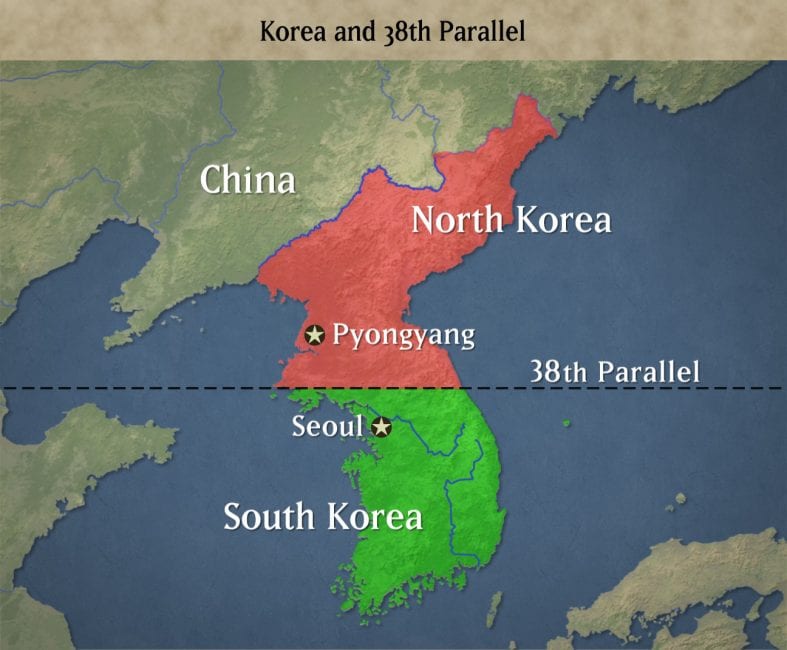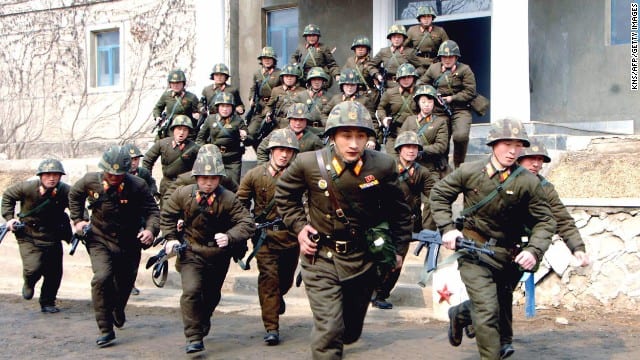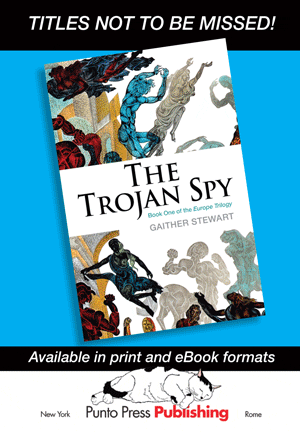US- S. Korea Exploiting DMZ Mine Incident to Divert Attention from Anti-N Korea Provocations
[dropcap]I [/dropcap]have no idea how it transpired that mines linked to the DPRK (north Korea) that severed the legs of two south Korean soldiers in the demilitarized zone earlier this month came to be where they were, anymore than Washington, Seoul or The New York Times does. But I do know that the set of possible explanations contains more than the single explanation favored by the south Korean and US governments and the Western media, that the mines were deliberately planted by north Korean soldiers as part of an “ongoing pattern of provocation.” I also know that neither Seoul nor Washington are likely to let any opportunity pass to resolve ambiguity into the certainty that the north Koreans, repeatedly denounced in Western propaganda as “belligerent”, have deliberately provoked tensions. The Western propaganda system has a confirmatory bias. All acts of north Koreans must be construed as belligerent, with every act so construed reinforcing the theory.
 One offered immediately after the event was that flooding or shifting soil had led mines to drift from another location. The New York Times’ Korea correspondent Choe Sang-hun reported on August 10 [1] that “Old mines loosed by floodwaters … pose a risk for soldiers serving in the zone. In 2010, dozens of North Korean land mines moved into the South through floodwaters, killing one villager and scaring vacationers away from rivers and beaches near the border.” Indeed, so heavily mined is the area “that wild deer sometimes step on them, causing blasts.” What’s more, “116 villagers have been killed by mines in Gangwon, one of the two South Korean provinces on the border with the North.”
One offered immediately after the event was that flooding or shifting soil had led mines to drift from another location. The New York Times’ Korea correspondent Choe Sang-hun reported on August 10 [1] that “Old mines loosed by floodwaters … pose a risk for soldiers serving in the zone. In 2010, dozens of North Korean land mines moved into the South through floodwaters, killing one villager and scaring vacationers away from rivers and beaches near the border.” Indeed, so heavily mined is the area “that wild deer sometimes step on them, causing blasts.” What’s more, “116 villagers have been killed by mines in Gangwon, one of the two South Korean provinces on the border with the North.”
In light of the large number of mines in the zone, and the scores of accidental deaths the mines have caused, it hardly seems that an accident is completely out of the question as an explanation for the tragedy of August 4. On the contrary, it seems to be a probable explanation.
Nevertheless, the probable explanation has been “ruled out” without explanation by Seoul and the “U.N. Command”, the latter presented in press reports as a neutral body, when, indeed, it is none other than the US military. The attempted deception of portraying US occupying forces as impartial observers is necessary to invest the accusation against north Korea with weight, since no one of an unbiased mind reasonably expects Washington to have a neutral attitude toward a country whose government it has been trying to bring down for the past 65 years.
By blaming north Korean for the tragedy, the US-led duo, patron and client, is deflecting attention from its own actual provocations of north Korea by inventing provocations on the north Korean side.
August 17 marked the beginning of joint US-south Korean war games targeted at north Korea, known as Ulji Freedom Guardian. These follow north Korea-targeted war games carried out earlier this year by the United States, south Korea, Britain, Australia and Canada. North Korea poses a vanishingly small offensive military threat to the US client state on the south of the peninsula. At $39 billion annually, Seoul’s military budget towers over Pyongyang’s comparatively meagre $10 billion annual expenditure. Adding decisively to the imbalance is the presence of nearly 30,000 US troops—and advanced US military hardware—on Korean soil, to say nothing of 45,000 US troops in nearby Japan, or the strategic nuclear missiles the United States targets on north Korea.
Contrary to a favored Western deception, the US war games on the Korean peninsula are not defensive; they’re part of a decades-long effort of low intensity warfare carried out by the United States and its client regime whose aim is to sabotage the small north Korean economy by forcing Pyongyang onto a perpetual war footing in which scarce resources are diverted from the civilian economy to defense. North Korea’s small economy can hardly support the expenditures on a conventional military necessary to deter aggression by south Korea and its behemoth patron. But this it must do, and is part of the reason why it has developed a nuclear shield.
[dropcap]T[/dropcap]he north Koreans face an unenviable choice: to keep up their guard at the expense of their economy, or let it down and face invasion and coerced absorption into the United States’ informal empire. As north Korea’s Workers’ Party puts it, “In actuality, the U.S. is plugging the DPRK into an arms race through ceaseless war drills and arms build-up in a sinister bid to throw hurdles in its efforts to develop its economy and improve the standard of its people’s living.” [2] (They did that to the Soviet Union, bankruoted the nation through an arms race, which also prevented the Soviets from delivering the full promise of the revolution, and we all know how that ended.—Eds.)
Pyongyang’s nuclear weapons, much are they’re portrayed to be provocative, are not a threat to Washington or Seoul. There’s much talk of “denuclearizing” the Korean peninsula, which is nothing more than a call for north Korea to remove a formidable obstacle to the United States fulfilling its agenda of chasing the anti-imperialists out of Pyongyang. Korea will never be denuclearized in any meaningful way so long as US strategic nuclear weapons are, or are able to be, targeted on north Korea—which is to say, so long as the United States maintains a nuclear arsenal. And since there’s no chance that Washington will voluntarily relinquish its nuclear weapons anytime soon, if ever, all talk of denuclearizing the Korean peninsula is simply a conversation about north Korea’s capitulation.
Fortunately, the disasters visited upon Gaddafi in Libya and Saddam in Iraq in voluntarily disarming under US pressure have not gone unnoticed by Pyongyang, which recognizes the advantages of having, in a very small quantity, the WMD the United States possesses in vast numbers. The lesson the DPRK drew from Libya was that the only guarantee of peace on the Korean peninsula is a powerful military, backed by nuclear weapons. [3] Others have acknowledged this, as well. “Who would have dared deal with Gaddafi or Saddam Hussein if they had a nuclear capability?” asks Major General Amir Eshel, chief of the Israeli army’s planning division. “No way.” [4]
[dropcap]C[/dropcap]alling for north Korea to denuclearize, without first calling for the United States to do the same, is logically indefensible. Since the cause of Pyongyang’s possession of nuclear weapons is to deter an aggressive nuclear armed predatory state, it follows that the only way in which the Korean peninsula can be disarmed meaningfully is to remove the root cause of its nuclearization, which means bilateral disarmament, and not north Korea surrendering its nuclear weapons unilaterally while the United States retains the capability to turn north Korea into a “charcoal briquette,” as a former head of the Pentagon once threatened. And just to be clear about who the aggressor is, consider that, according to declassified and other US government documents, from “the 1950s’ Pentagon to today’s Obama administration, the United States has repeatedly pondered, planned and threatened the use of nuclear weapons against north Korea,” [5] and importantly, during most of those years north Korea was a non-nuclear weapons state. These documents, along with the public statements of senior US officials, point to an ongoing pattern of US nuclear intimidation of the DPRK.
• The United States introduced nuclear weapons to the Korean peninsula as early as 1950. [6]
• In the late 1960s, nuclear-armed US warplanes were maintained on 15-minute alert to strike north Korea. [8]
• In 1975, US defense secretary James Schlesinger acknowledged for the first time that US nuclear weapons were deployed in south Korea. Addressing the north Koreans, he warned, “I do not think it would be wise to test (US) reactions.” [9]
• In February 1993, Lee Butler, head of the US Strategic Command, announced the United States was retargeting hydrogen bombs aimed at the old USSR on north Korea (and other targets.) One month later, north Korea withdrew from the Nuclear Non-proliferation Treaty. [10]
• On July 22, 1993, US president Bill Clinton said if north Korea developed and used nuclear weapons “we would quickly and overwhelmingly retaliate. It would mean the end of their country as we know it.” [11]
• In 1995, Colin Powell, who had served as chairman of the US joints chiefs of staff and would later serve as US secretary of state, warned the north Koreans that the United States had the means to turn their country into “a charcoal briquette.” [12]
• Following north Korea’s first nuclear test on October 9, 2006, US secretary of state Condoleezza Rice reminded north Korea that “the United States has the will and the capability to meet the full range—and I underscore full range of its deterrent and security commitments to Japan.” [13]
• In April 2010, US defense secretary Leon Panetta refused to rule out a US nuclear attack on north Korea, saying, “all options are on the table.” [14]
• On February 13, 2013, Panetta described north Korea as “a threat to the United States, to regional stability, and to global security.” He added: “Make no mistake. The US military will take all necessary steps to meet our security commitments to the Republic of Korea and to our regional allies.” [15]
As the north Koreans put it, “no nation in the world has been exposed to the nuclear threat so directly and for so long as the Koreans.”[16]
[dropcap]I[/dropcap]n pursuing its foreign policy goals, Washington threatened other countries with nuclear attack on 25 separate occasions between 1970 and 2010, and 14 occasions between 1990 and 2010. On six of these occasions, the United States threatened the DPRK. [17] There have been more US threats against north Korea since. (The United States’ record of issuing threats of nuclear attack against other countries over this period is: Iraq, 7; China, 4; the USSR, 4; Libya, 2; Iran, 1; Syria, 1. Significantly, all these countries, like the DPRK, were under communist or economically nationalist governance when the threats were made.)
Since the United States is one of the most aggressive countries in history, not out of place in a category that contains Nazi Germany and militarist Japan, we should hardly passively accept its status as the world’s #1 possessor of WMD. As for north Korea, whose only military aggression (if it can be called that) has occurred as part of a just and legitimate civil war to achieve real independence by liberating the south from the rule of the United States and the Japanese collaborators it recruited to staff its puppet state, it seems to me that lamenting Pyongyang’s nuclear arsenal while accepting Washington’s is completely backward. It’s like deploring the symptoms while accepting the virus.
Inasmuch as Pyongyang’s nuclear arsenal helps the DPRK stop the juggernaut of US imperialism, those who deplore imperialist predation ought to welcome north Korea’s own observation that the “army and people of the DPRK are no longer what they used to be in the past when they had to counter the U.S. nukes with rifles.” [18]
On top of war games, south Korea has elevated its provocations by resuming, after an 11 year hiatus, propaganda broadcasts, broadcast into north Korea by giant speakers placed at the border, ostensibly in retaliation for the mine incident. The south Korean military has pressed into service “newly developed digital mobile speakers” that “have a range of over 20 kilometers, or double that of the old model.” [19] The DPRK threatened to attack the loudspeakers, eliciting an Orwellian demand from south Korean president Park Geun-hye for Pyongyang to stop “military provocations on the border.” [20]
[dropcap]T[/dropcap]wo years ago, the Wall Street Journal revealed that the White House approved a detailed plan, called ‘the playbook,’ to ratchet up tension with north Korea. The playbook was developed by the Pentagon’s Pacific Command, and was discussed at several high-level White House meetings. The plan called for low-altitude B-52 bomber flights over the Korean peninsula. Two nuclear-capable B-2 bombers dropped dummy payloads on a south Korean missile range. The flights were deliberately carried out one spring day in 2013 in broad daylight at low altitude. “We could fly it at night, but the point was for them to see it,” said a US military official. A few days later, the Pentagon deployed two advanced F-22 warplanes to south Korea, also part of the ‘play-book’ plan to intimidate Pyongyang. [21]
According to the Wall Street Journal, the White House knew that the north Koreans would react by threatening to retaliate against the United States and south Korea. US “Defense officials acknowledged that north Korean military officers (were) particularly agitated by bomber flights because of memories of the destruction wrought from the air during the Korean War.” [22] US warplanes had demolished every target over one story. They also dropped more napalm in Korea than they did later in Vietnam. [23] The death toll reached into the millions.
The reality, then as now, is exactly opposite of the narrative formulated in Washington and reliably propagated by the Western mass media. Washington and Seoul haven’t responded to north Korean belligerence and provocations; they’ve deliberately planned a show of force in order to elicit an angry north Korean reaction, which is then labelled “belligerent” and “provocative.” The provocations, coldly and calculatingly planned, have come from Washington and south Korea. North Korea’s reactions have been defensive and necessary.
As for the DMZ mine incident, it seems likely that it was accident and Washington and Seoul have decided to turn it into an opportunity to further demonize north Korea, to use it as a pretext to ratchet up pressure on Pyongyang by resuming propaganda broadcasts across the border, and to divert attention from the true provocations on the peninsula—their regular and robust anti-DPRK war games.
1. Choe Sang-hun, “South Korea accuses the north after land mines maim two soldiers in DMZ”, The New York times, August 10, 2015.
2. US-S. Korean Ulji Freedom Guardian joint military drills under fire,” Rodong Sinmun, August 14, 2015.
3. Mark McDonald, “North Korea suggests Libya should have kept nuclear program”, The New York Times, March 24, 2011.
4. Ethan Bronner, “Israel sense bluffing in Iran’s threats of retaliation”, The New York Times, January 26, 2012.
5. Charles J. Hanley and Randy Hershaft, “U.S. often weighed N. Korea nuke option”, The Associated Press, October 11, 2010.
6. Hanley and Hershaft.
7. Hanley and Hershaft.
8. Hanley and Hershaft.
9. Hanley and Hershaft.
11. William E. Berry Jr., “North Korea’s nuclear program: The Clinton administration’s response,” INSS Occasional Paper 3, March 1995.
12. Bruce Cumings, “Latest North Korean provocations stem from missed US opportunities for demilitarization,” Democracy Now!, May 29, 2009.
13. Lou Dobbs Tonight, October 18, 2006.
14. Hanley and Hershaft.
15. Choe Sang-hun, “New leader in South criticizes North Korea,” The New York Times, February 13, 2013.
16. “Foreign ministry issues memorandum on N-issue,” Korean Central News Agency, April 21, 2010.
17. Samuel Black, “The changing political utility of nuclear weapons: Nuclear threats from 1970 to 2010,” The Stimson Center, August 2010, http://www.stimson.org/images/uploads/research-pdfs/Nuclear_Final.pdf
18. Rodong Sinmum, August 17, 2015.
19. “More leaflet launches by conservative groups during inter-Korean impasse,” The Hankyoreh, August 14, 2015.
20. Choe Sang-hun, “South Korean leader marks anniversary of war’s end with warning to north Korea,” The New York Times, August 15, 2015.
21. Jay Solomon, Julian E. Barnes and Alastair Gale, “North Korea warned”, The Wall Street Journal, March 29, 2013.
22. Julian E. Barnes, “U.S. pledges further show of force in Korea”, The Wall Street journal, March 29, 2013
23. Bruce Cumings. The Korean War: A History. Modern Library. 2010.
…
![]()
FACT TO REMEMBER:
IF THE WESTERN MEDIA HAD ITS PRIORITIES IN ORDER AND ACTUALLY INFORMED, EDUCATED AND UPLIFTED THE MASSES INSTEAD OF SHILLING FOR A GLOBAL EMPIRE OF ENDLESS WARS, OUTRAGEOUS ECONOMIC INEQUALITY, AND DEEPENING DEVASTATION OF NATURE AND THE ANIMAL WORLD, HORRORS LIKE THESE WOULD HAVE BEEN ELIMINATED MANY YEARS, PERHAPS DECADES AGO. EVERY SINGLE DAY SOCIAL BACKWARDNESS COLLECTS ITS OWN INNUMERABLE VICTIMS.
![]()
[printfriendly]
REBLOGGERS NEEDED. APPLY HERE!
Get back at the lying, criminal mainstream media and its masters by reposting the truth about world events. If you like what you read on The Greanville Post help us extend its circulation by reposting this or any other article on a Facebook page or group page you belong to. Send a mail to Margo Stiles, letting her know what pages or sites you intend to cover. We MUST rely on each other to get the word out!
And remember: All captions and pullquotes are furnished by the editors, NOT the author(s).
What is $5 a month to support one of the greatest publications on the Left?


